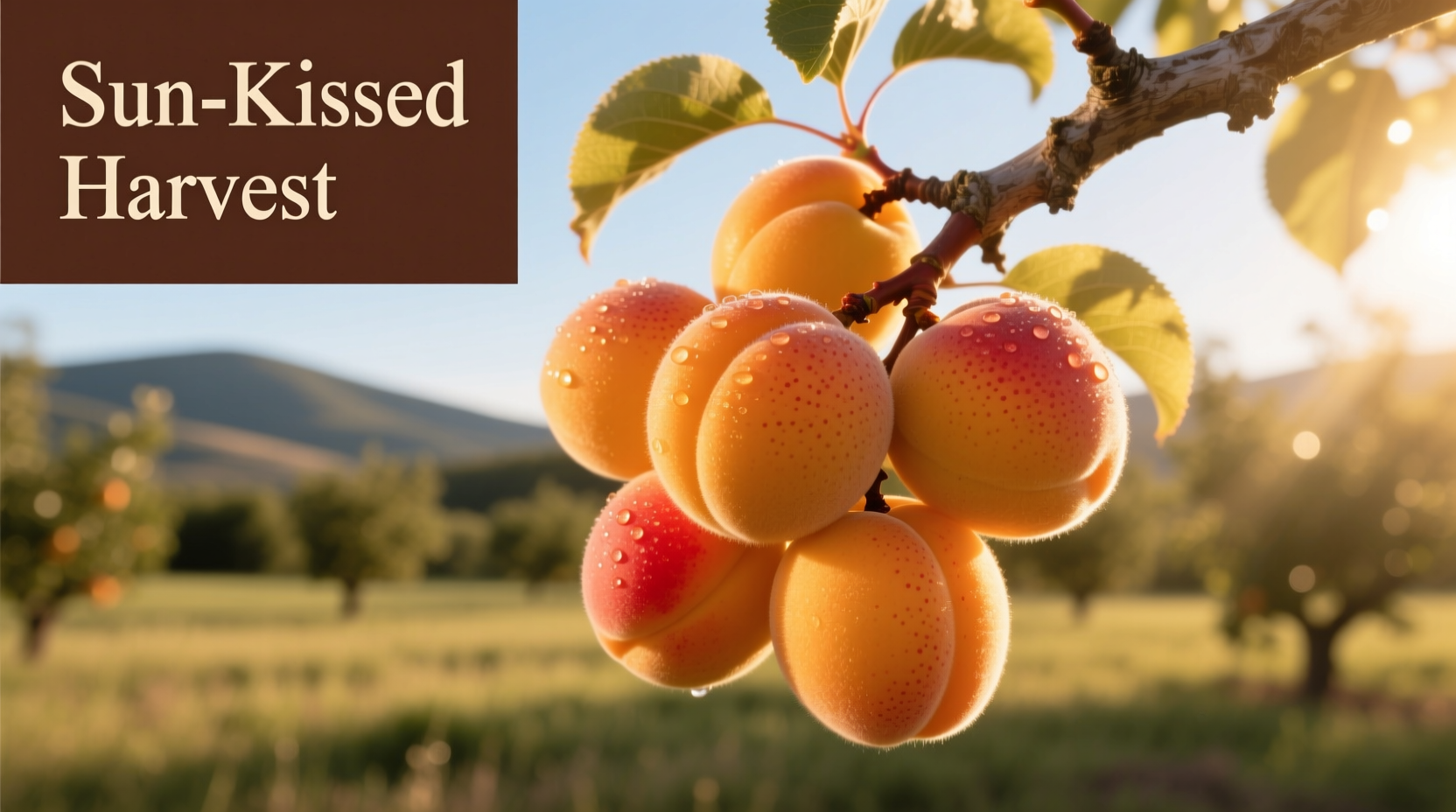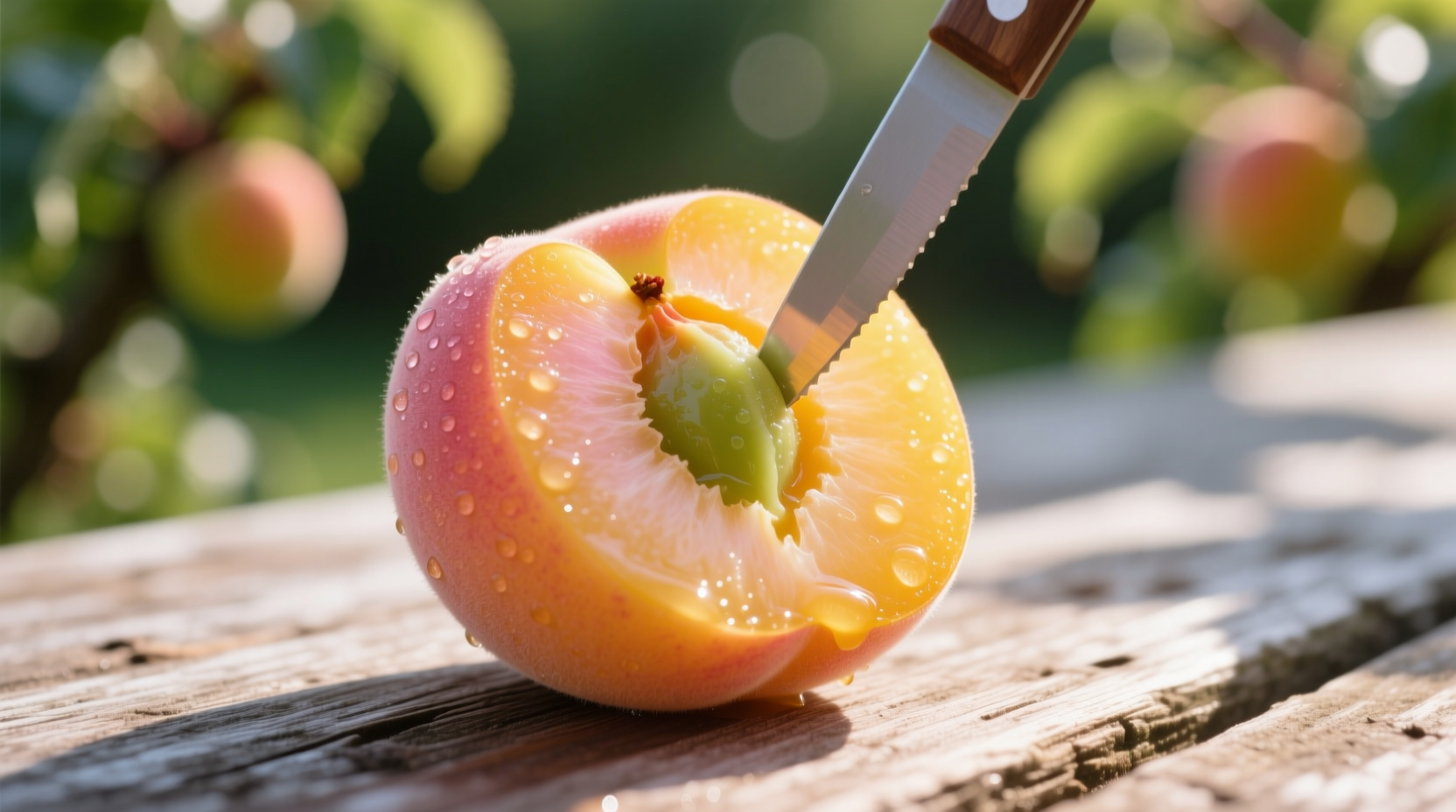The Complete Flavor Profile of Apricots: More Than Just Sweet or Tart
When you bite into a perfectly ripe apricot, you're experiencing one of nature's most beautifully balanced fruits. Unlike many fruits that lean heavily toward either sweetness or acidity, apricots achieve a remarkable harmony that makes them stand out in the stone fruit family.
Breaking Down the Apricot Flavor Experience
Apricots deliver a multi-layered taste sensation that evolves as you eat:
- First impression: A burst of honeyed sweetness that's never cloying
- Middle notes: Distinct peach-like floral tones with subtle plum undertones
- Finish: A refreshing, almost citrus-like tartness that cleanses the palate
- Aromatic elements: Delicate floral notes similar to orange blossom
According to sensory analysis conducted by the University of California's Department of Viticulture and Enology, apricots contain over 40 different volatile compounds that contribute to their complex flavor profile, with linalool (a floral compound) and gamma-decalactone (a peach-like compound) being particularly prominent. Their research shows these compounds interact differently depending on ripeness and variety.
| Ripeness Level | Sweetness (1-10) | Tartness (1-10) | Primary Flavor Notes | Texture |
|---|---|---|---|---|
| Underripe | 3 | 8 | Green, sour, slightly bitter | Firm, crunchy |
| Perfectly ripe | 7 | 5 | Honey, peach, subtle berry | Soft, juicy, velvety |
| Overripe | 9 | 2 | Rich, jammy, fermented hints | Mushy, very soft |
How Apricot Flavor Changes From Unripe to Perfectly Ripe
The transformation of apricot flavor follows a precise timeline that affects both taste and texture:
- Weeks before harvest: Apricots develop high starch content with minimal sugar (Brix level around 4-5°)
- Final ripening phase: Starch converts to sugar, acidity decreases by 30-40% (Brix rises to 10-14°)
- Perfect ripeness: Optimal sugar-acid ratio achieved (typically 12-14° Brix with pH 3.8-4.2)
- Overripening: Sugar concentration increases further while acids continue to break down, leading to fermented notes
This ripening process explains why grocery store apricots often disappoint—they're typically harvested early to withstand shipping, never reaching their full flavor potential. The USDA Agricultural Research Service notes that tree-ripened apricots can contain up to 40% more aromatic compounds than those picked green for commercial distribution. You can learn more about their fruit quality research in their Fruit Quality Research Program.
Apricot vs. Similar Fruits: Understanding the Taste Differences
Many people wonder how apricots compare to other stone fruits. While related to peaches, plums, and nectarines, apricots have distinct characteristics:
- Apricot vs. Peach: Apricots are smaller, more tart, and have a more complex floral note. Peaches are generally sweeter and milder in flavor.
- Apricot vs. Plum: Apricots are less sweet with brighter acidity. Plums often have deeper, wine-like notes.
- Apricot vs. Nectarine: Nectarines are consistently sweeter with less tartness. Apricots offer more nuanced flavor layers.
Professional chefs often describe apricots as having "the soul of a plum with the heart of a peach." This unique positioning makes them incredibly versatile in both sweet and savory applications.

Factors That Influence Apricot Flavor
Not all apricots taste the same. Several factors dramatically affect their flavor profile:
- Variety: The popular 'Blenheim' variety offers intense honeyed flavor, while 'Tilton' leans more toward tartness.
- Growing conditions: Apricots grown in Mediterranean climates develop more complex sugars than those from cooler regions.
- Harvest timing: Apricots picked at physiological maturity (not just color change) develop superior flavor compounds.
- Post-harvest handling: Temperature management significantly affects flavor development during ripening.
According to Cornell University's Food Science Department, apricots grown in regions with significant day-night temperature variations develop more complex flavor profiles due to increased sugar accumulation during warm days and slower acid breakdown during cool nights. Their research on fruit quality shows these conditions create apricots with up to 25% more aromatic compounds.
How to Select Apricots for the Best Flavor Experience
Knowing what apricots should taste like is only half the battle—you need to select ones that will deliver that flavor:
- Color check: Look for deep golden-orange hues with possible red blush. Avoid pale yellow or greenish tones.
- Texture test: Should yield slightly to gentle pressure but not feel mushy.
- Scent sniff: Ripe apricots emit a sweet, floral fragrance at the stem end.
- Seasonality: Peak season (May-July in Northern Hemisphere) delivers the most flavorful fruit.
For the best flavor, allow slightly firm apricots to ripen at room temperature for 1-2 days. Once ripe, they'll develop their full aromatic complexity. Refrigeration halts the ripening process but can diminish flavor intensity if done too early.
Culinary Applications That Showcase Apricot Flavor
Understanding apricot's unique taste profile helps you use it effectively in cooking:
- Fresh consumption: Enjoy at peak ripeness for the full honey-tart balance
- Jams and preserves: The natural pectin and acid content create perfect set with balanced sweetness
- Baking: Complements almonds and vanilla, enhancing apricot's natural flavor notes
- Savory pairings: Works beautifully with duck, pork, and mild cheeses
- Dried form: Concentrates sweetness while preserving tartness (though some aromatic compounds are lost)
Professional chefs recommend using underripe apricots in savory applications where their tartness can cut through rich meats, while perfectly ripe fruit shines in desserts where its delicate floral notes can be appreciated.
Why Some Apricots Disappoint: The Commercial Reality
If your experience with apricots has been underwhelming, you're not alone. Most supermarket apricots are harvested weeks before peak ripeness to survive shipping, resulting in:
- Lower sugar content (typically 8-10° Brix instead of 12-14°)
- Fewer aromatic compounds
- Less developed flavor complexity
- Higher water content diluting taste
For the authentic apricot experience, seek out locally grown fruit at farmers markets during peak season, or consider growing your own if climate permits. The difference in flavor complexity is remarkable.
Conclusion: Embracing the Apricot's Unique Flavor Journey
The apricot's taste is a delicate dance of sweet and tart, floral and fruity, familiar yet distinctive. When perfectly ripe, it offers one of the most nuanced flavor experiences among stone fruits—a complex profile that rewards careful selection and proper ripening. Understanding what apricots should taste like helps you appreciate them fully and select the best specimens for your culinary adventures.











 浙公网安备
33010002000092号
浙公网安备
33010002000092号 浙B2-20120091-4
浙B2-20120091-4